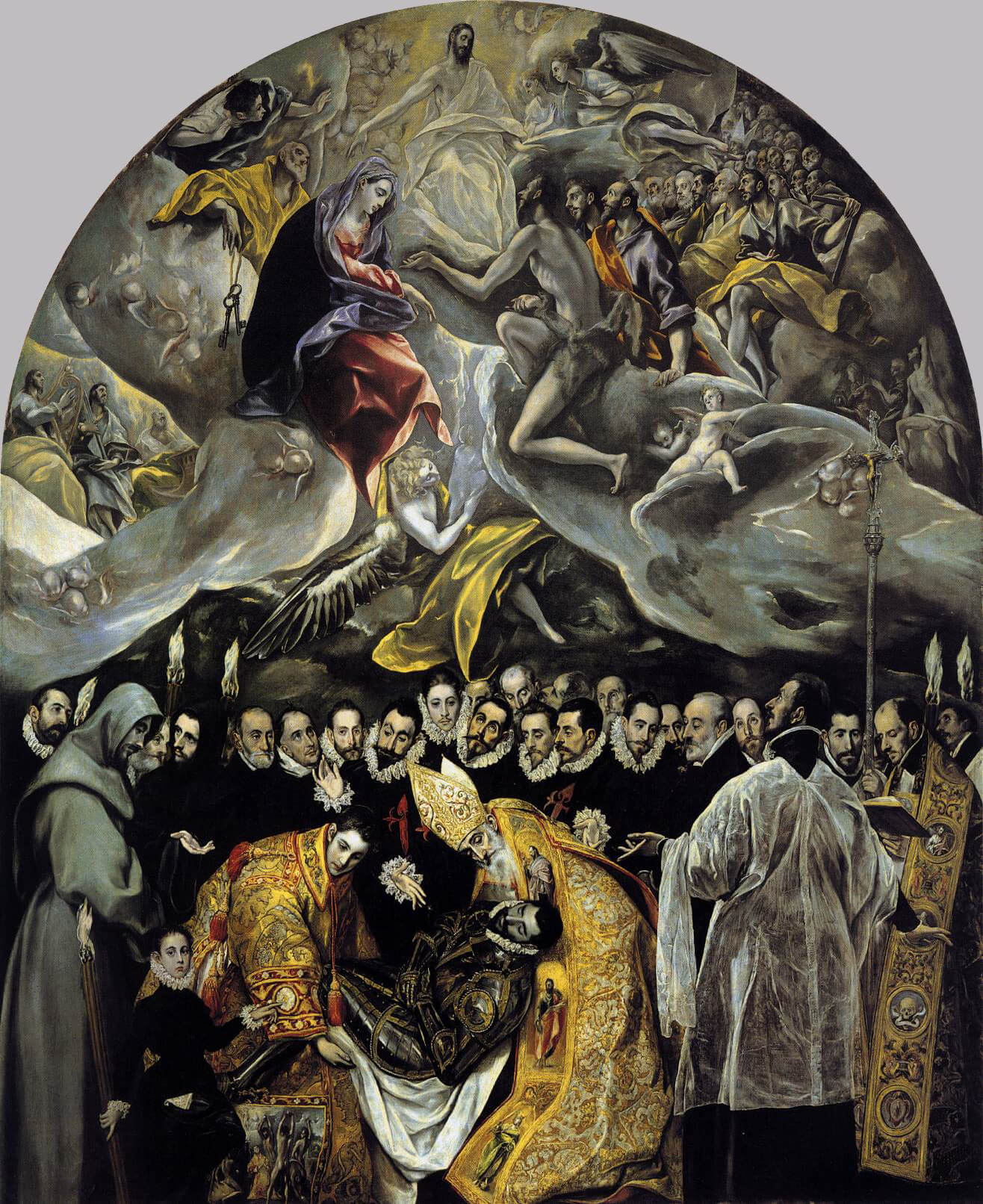This extraordinary electric shock of a painting depicts the miracle of the Count’s burial, when St Augustine and St Stephen were reported to have descended from heaven to lay the pious nobleman to rest. We peel back the curtain, and are confronted with a vast (15×11 feet) scene of two distinct worlds: the sombre realism of the earthbound burial stands discordantly beneath the swirling, Sanctus-from-the-Bminor-Mass, heavenly throng of angels and saints. The funeral is populated by characters who are too affectionately lifelike not to have been known to the artist, and look how brilliant and often touching his attention to detail is: the ruffs of the mourners, the magnificent, golden robes of the Saints (the younger saint rosy-cheeked and youthful) contrast with the relatively dull reflective metallic texture on the armour of the dignified nobility of the deceased. You can practically hear the conspiratorial whispers of the two friars on the left.
The artist’s own son is there too, looking out at us: he’s holding a torch, and drawing our eyes to the play-within-a-play of the violent portrait of martyrdom just below his left hand. Linking the two dimensions is the priest with the translucent surplice, whose gaze connects us to heaven, along with his diaphanous garment which chimes sympathetically with the clouds we see above.
In the vision of the hereafter, the yellow gold of St. Peter’s robes harmonises heaven with the earthly Saints. But look how the figures are more elongated, stylised, less rooted in the empathetic reality he gives the mourners, but more reminiscent of his past as a painter of icons. These were works whose purpose was not to reflect the seen world, but to give a glimpse into the transcendental, which might explain why, directly beneath Christ, the swirling, half-formed phantasm is said to be the visible soul of the Count, passing, via the Virgin Mary, into heaven.
So, we have a synthesis of two worlds: earthly and heavenly, bodily and spiritual, and – for the artist – a collision of his past, his present, and the future. The painting also interacts movingly with its own space: the Count’s tomb is just below this altarpiece; it is as if the painting depicts the actual burial in real life, for eternity. All of which gives us a symphony of technicolour imagination and inspiration, and an unforgettable vision of heaven on earth.


